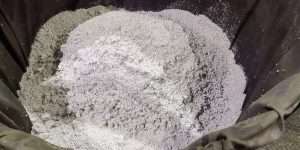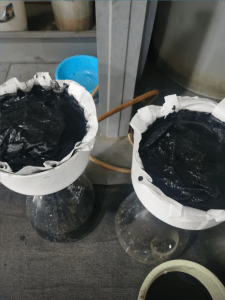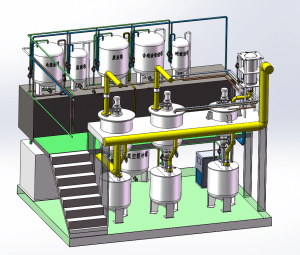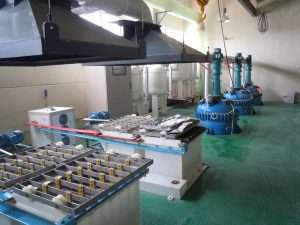Call us now:
The chemical catalytic, electronic and electroplating industries mostly use ruthenium trichloride products directly. Therefore, the direct production of this product from ruthenium-containing waste catalysts simplifies the process, reduces reagent consumption and increases the recovery rate. Processes for the production of reagent-grade ruthenium chloride products from ruthenium-containing waste have been studied. For example, the waste containing 67.9% Ru and the rest mainly Pt, Ag and Pb is placed in the evaporation reactor, and a 30% NaOH solution is added to the evaporation reactor in 3 parts with a NaOH dosage of about 5 times the waste, while chlorine gas is introduced to oxidize the evaporation (reaction Ru+NaOH+4Cl=RuO4+8NaCl+4H2O).
The first stage isolates the possible splash of salt-containing solution from the distiller with water absorbent solution, followed by 7 stages of 6 mol/L HCl + 0.5% C2H5OH solution in series to absorb the volatile RuO4 (reaction 2RuO4 + 20HCl = 2H2RuCl5 + 8H2O + 5Cl2).

The second stage absorption solution is extracted and filtered and slowly concentrated to syrupy form, and then slowly dried by infrared light, which is RuCl3 product, and sealed (to prevent moisture absorption). The residue is mixed with alcoholic reductant for 12h until the solution is colorless and filtered, and the residue is divided into Ag and Pb by nitric acid solution. The residue of the secondary distillation contains very little Ru. The two evaporation cycles were carried out to obtain the ruthenium trichloride product with a recovery of 98% Ru.


